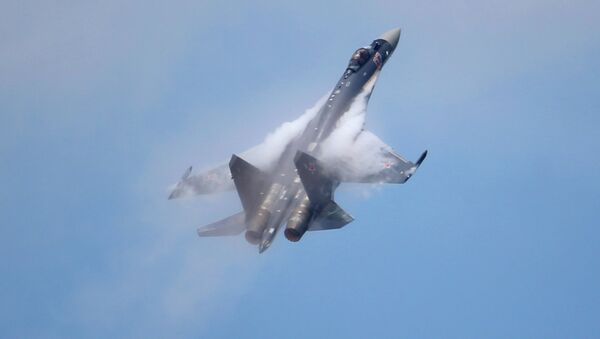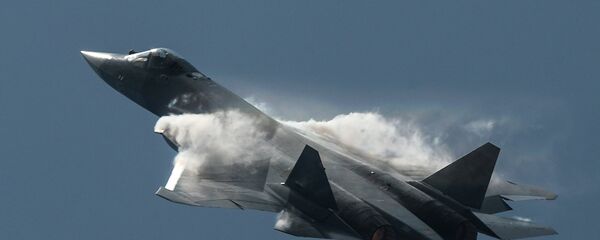Sebastien Roblin, in an article for the National Interest, decided to get to the bottom of things and presented a comprehensive comparison of both aircrafts’ strength and weaknesses.
In terms of sensors, the APG-63 V3 Active Electronically Scanned Array radar is apparently superior to the Su-35s Irbis-E passive electronically scanned array radar, as it is "harder to jam, higher resolution and harder to track."
However, the US aircraft currently lacks the infrared search and track system that its Russian counterpart has, and is not designed to be stealthy, unlike the Su-35.
In terms of air-to-air weapons, the Su-35 has 12 or more hardpoints compared to the eight of F-15C, though the long-range, radar guided air-to-air missiles sported by both planes "are basically in the same class," according to the author.
Furthermore, the L175M Khibiny radar jamming system installed on the Su-35, while possibly not as effective against the F-15 radars, may in fact pose a serious threat to radars of the AIM-120 air-to-air missiles employed by the US fighter.
But it’s dogfighting capability is where the Russian aircraft has a clear and undeniable advantage over its US counterpart.
"The Eagle is no slouch when it comes to maneuverability—in fact, it is one of the first designs to prove a heavy fighter could still pull off tight, energy-efficient turns and accelerate while climbing, thanks to low wing loading and high thrust-to-weight ratio. However, the Su-35 is simply in a class of its own. It uses vector-thrust turbofans—which means its engine nozzles can move independently to allow it to perform tight turns and yaws and maintain high angles of attack (in which the plane's nose is pointed in a different direction than the plane is moving) that ordinary aircraft can’t match. The Su-35 will reliably dance around an F-15 in a low-speed dogfight," the author explains.
All in all, the author surmises, "the Su-35 takes the crown of best dogfighter, and also remains a very capable and versatile missile platform against both air and ground targets," noting that the current models of F-15 still remain "capable air superiority fighters with advanced radar."
Nevertheless, he points out, it appears that the future aircraft combat capabilities may be more defined by the "effectiveness of missiles and electronic counter measures" rather than the plane’s characteristics.


